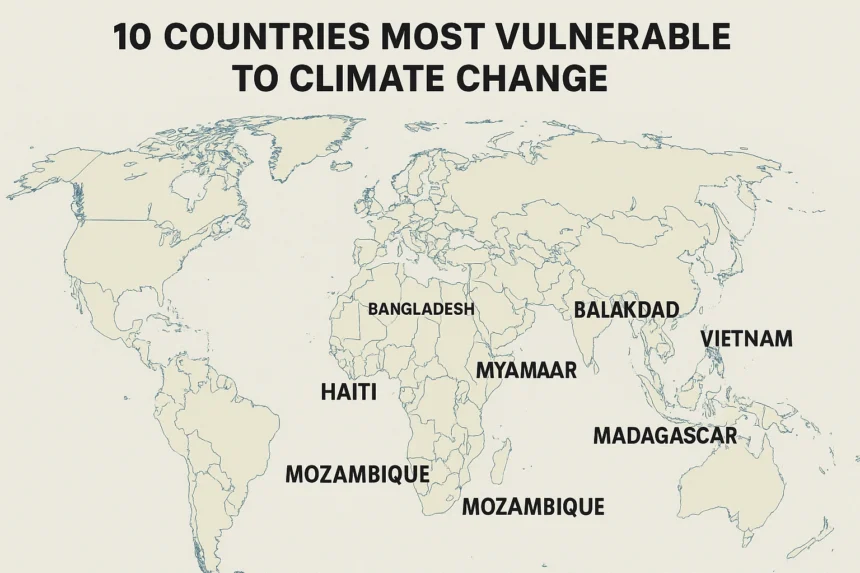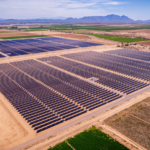Climate change is no longer a looming threat—it is a pressing global emergency. As per the TOI report, countries with fragile infrastructure, exposure to natural disasters, and limited adaptive capacity are facing irreversible damage due to rising sea levels, extreme weather events, and environmental degradation.
Based on vulnerability indexes and global climate risk data, here are the top 10 countries most at risk of vanishing or suffering long-term climate consequences if proactive measures are not taken immediately:
1. Bangladesh: Rising Waters Threaten a Nation
As per the TOI report, Bangladesh, located in the low-lying Ganges Delta, is extremely susceptible to rising sea levels, floods, and erosion. Its growing population and dependence on agriculture make the situation dire. Displacement due to cyclones and saltwater intrusion has become routine, pushing the need for climate-resilient infrastructure.
2. Haiti: Caught Between Instability and Nature
Already battling economic struggles, Haiti is now confronting the harsh impacts of climate change. As per the TOI report, frequent hurricanes, floods, and droughts are deteriorating living conditions and damaging agriculture. Climate action here requires global partnerships and aid to build resilience.
3. Pakistan: On the Edge of Environmental Collapse
Pakistan is among the top nations most affected by climate extremes. According to the TOI report, the country faces glacial melt, recurring floods, and rising temperatures. Its economic instability and growing population further strain its limited environmental resources and reduce its ability to adapt.
4. Philippines: Prone to Typhoons and Coastal Risks
The Philippines faces a relentless cycle of typhoons, storms, and rising sea levels. As per the TOI report, its coastal communities and reliance on marine resources make it highly vulnerable. Stronger policies, disaster preparedness, and localized action are key to survival.
5. Myanmar: From Biodiversity to Battleground
Once celebrated for its rich biodiversity, Myanmar now ranks high among the most climate-exposed nations. As per the TOI report, extreme weather events and rising temperatures are disrupting its rural communities that depend heavily on fishing and farming.
6. Vietnam: Economic Growth at Environmental Risk
Vietnam has seen rapid economic development, but it comes at an environmental cost. Rising sea levels, typhoons, and saline intrusion in agricultural zones put millions at risk. The TOI report notes the urgency for sustainable urban planning and climate-smart agriculture in the region.
7. Madagascar: Struggling for Survival
Madagascar is ranked as the fourth most affected country globally by climate change, as per UN data cited in the TOI report. The southern region faces severe drought, threatening food security and biodiversity. Climate change jeopardizes both human life and the island’s unique ecosystems.
8. Nepal: Melting Glaciers, Rising Risk
As per the TOI report, Nepal’s high-altitude location puts it at risk of glacial lake outbursts and landslides. Shifting monsoon patterns threaten water sources and agricultural output. Limited resources and remote access make adaptation challenging in rural areas.
9. Zimbabwe: Dry Spells and Food Insecurity
Zimbabwe is grappling with droughts, erratic rainfall, and a declining agricultural output. According to the TOI report, food insecurity is rising due to climate-related crop failures, and rural communities are most affected. Economic constraints hinder efforts to build resilience.
10. Mozambique: Storms and Structural Fragility
Mozambique is frequently hit by tropical cyclones and floods. Its fragile infrastructure and low income levels exacerbate the impact of disasters. As per the TOI report, the country’s coastal and river basin geography puts it at high risk of future climate disruptions.
Conclusion: A Call for Global Climate Action
These ten nations serve as urgent reminders that climate change is already altering lives and landscapes. As emphasized in the TOI report, without unified global efforts and localized adaptation strategies, these vulnerable countries may face irreversible damage or disappearance in the coming decades.
It is not just about sea levels rising—it’s about livelihoods vanishing, biodiversity disappearing, and millions being pushed to the edge of survival.












